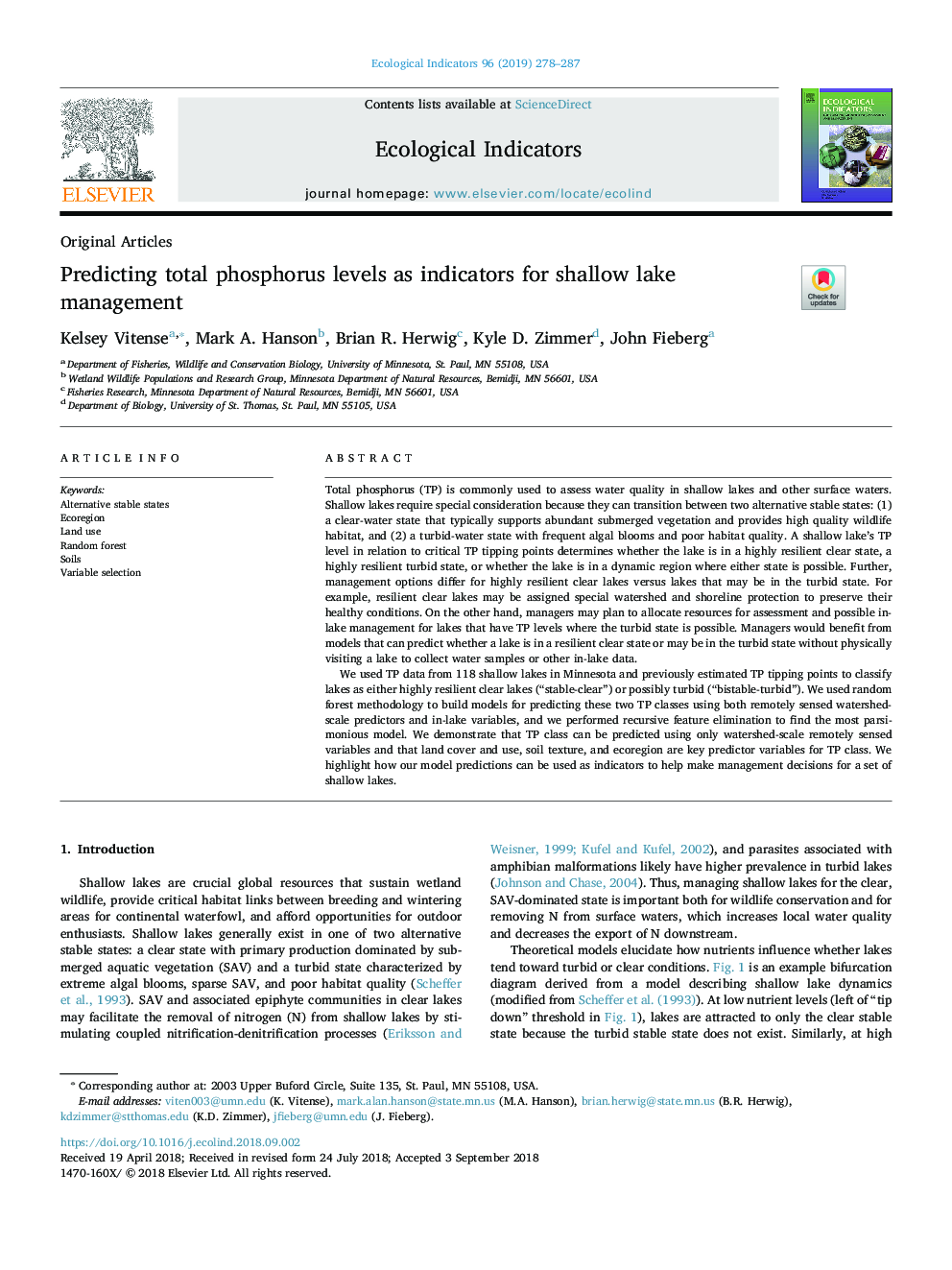| Article ID | Journal | Published Year | Pages | File Type |
|---|---|---|---|---|
| 10144236 | Ecological Indicators | 2019 | 10 Pages |
Abstract
We used TP data from 118 shallow lakes in Minnesota and previously estimated TP tipping points to classify lakes as either highly resilient clear lakes (“stable-clear”) or possibly turbid (“bistable-turbid”). We used random forest methodology to build models for predicting these two TP classes using both remotely sensed watershed-scale predictors and in-lake variables, and we performed recursive feature elimination to find the most parsimonious model. We demonstrate that TP class can be predicted using only watershed-scale remotely sensed variables and that land cover and use, soil texture, and ecoregion are key predictor variables for TP class. We highlight how our model predictions can be used as indicators to help make management decisions for a set of shallow lakes.
Related Topics
Life Sciences
Agricultural and Biological Sciences
Ecology, Evolution, Behavior and Systematics
Authors
Kelsey Vitense, Mark A. Hanson, Brian R. Herwig, Kyle D. Zimmer, John Fieberg,
